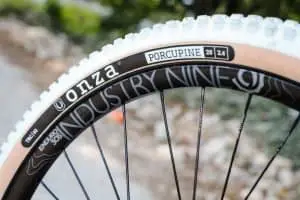Last Updated on November 2, 2023
Regarding mountain biking, tire pressure can make a huge difference in your ride. The right tire pressure can give you better traction and stability on the trail, while the wrong pressure can lead to a bumpy and uncomfortable experience. So, what PSI is best for mountain bike tires? The answer depends on a few factors.
Understanding PSI and Its Importance

Arguably, the most critical factor to consider about mountain bike tires is tire pressure. It is measured in pounds per square inch (PSI), the standard unit for tire air pressure.
If the pressure is too low, you may experience sluggish handling, poor traction, and increased rolling resistance. You may also experience a sudden loss of air while riding, leading to a loss of control and a crash. Conversely, you may feel every bump in the road, and your tires may be more prone to punctures if the tires have a high pressure.
Conversely, overinflated tires can cause excessive wear in the center of the tire, while underinflated tires can cause excessive wear on the sides.
Generally, heavier riders require higher tire pressure, while lighter riders should opt for lower PSI to achieve better traction and control. The right tyre pressure for most mountain bike tires is within the range of 22-35 PSI, but it’s always best to check the manufacturer’s recommendations for your specific tire model.
The Role of Tires in Mountain Biking
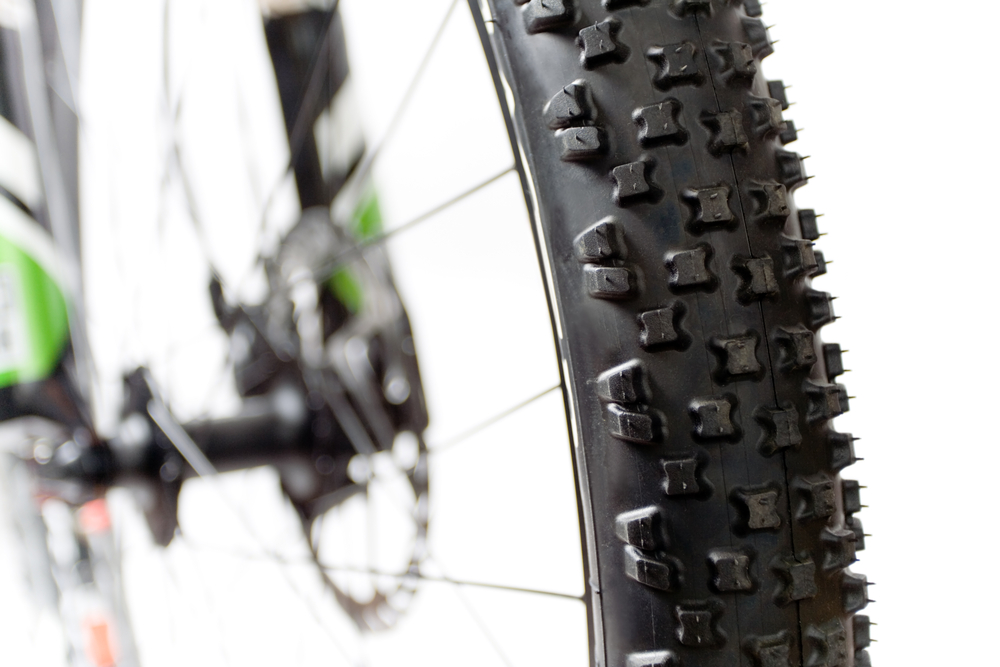
Here are some key factors to consider when it comes to mountain bike tires:
- Tire size and width – Generally, wider tires provide more traction and stability, while narrower tires offer less rolling resistance and a faster ride.
- Front and rear tires – The front tire should have more traction and control, while the rear tire should have more speed and efficiency.
- Tire casing – Single-ply tires are lighter and more flexible, but they offer less protection against punctures and cuts. Dual-ply tires are heavier and stiffer, but they offer more protection and durability.
- Tubeless tires – A tubeless tire offers several benefits, including a smoother ride, better traction, and fewer flats. However, it can be more difficult to install and maintain than traditional tires.
- Rim Width – A wider rim can provide more stability and support for wider tires, while a narrower rim can offer a faster ride and less rolling resistance.
Factors Affecting Tire Pressure
Here are some of the most important factors that can impact what the ideal tire pressure is for you:
Terrain
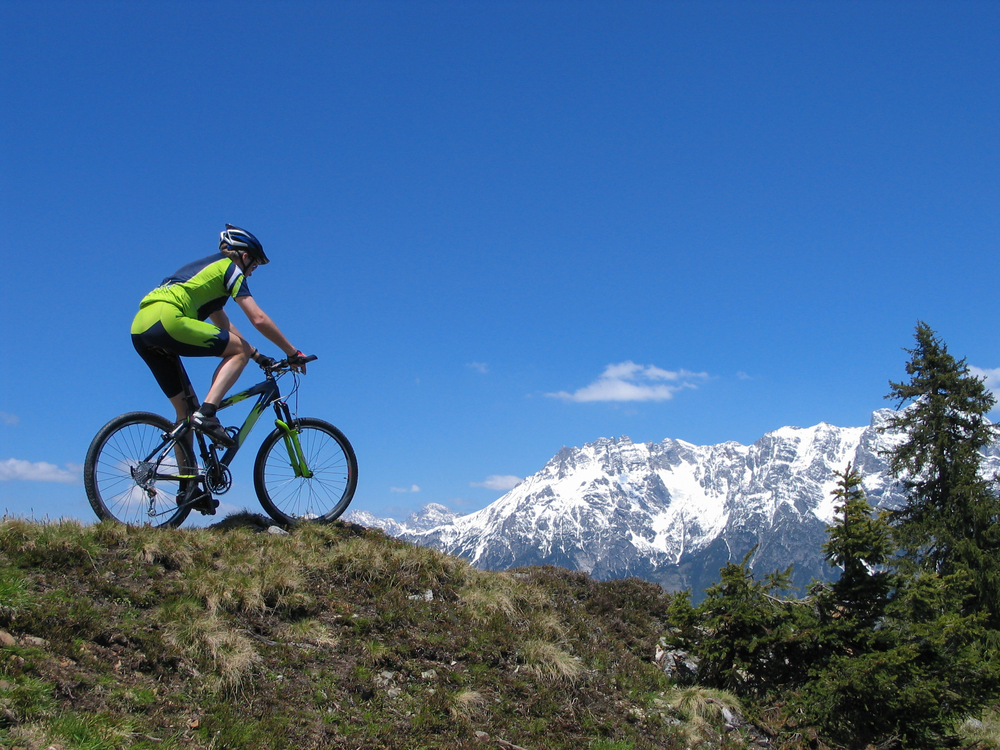
If riding on rocky terrain or over roots, you must run higher pressure to avoid pinch flats. On the other hand, if you are riding on smooth trails, you can run lower pressure for better traction and a smoother ride.
Trail Conditions
A wet or muddy trail requires running lower tire pressure for better traction. If the trail is dry and hard-packed, you can run higher tire pressure for better efficiency.
Temperature
Consider running slightly higher tire pressure in colder temperatures to compensate for the decreased air pressure in your tires. In warmer temperatures, you may want to run slightly lower tire pressure to avoid overinflation.
Rider Weight
Heavier riders want to run higher tire pressure to avoid pinch flats, while lighter riders can run lower tire pressure for better traction and a smoother ride.
Bike Weight and Weight Distribution
For heavier bikes or those whose weight is distributed towards the rear, you may want to run slightly higher tire pressure to avoid pinch flats. If you have a lighter bike or the weight is distributed towards the front, you can run slightly lower tire pressure for better traction.
Tire Pressure Sweet Spot
You want to run enough pressure to avoid pinch flats and maintain stability but not so much pressure that you sacrifice traction and a smooth ride. Experiment with different tire pressures to find your tire pressure sweet spot.
How to Measure and Adjust Tire Pressure
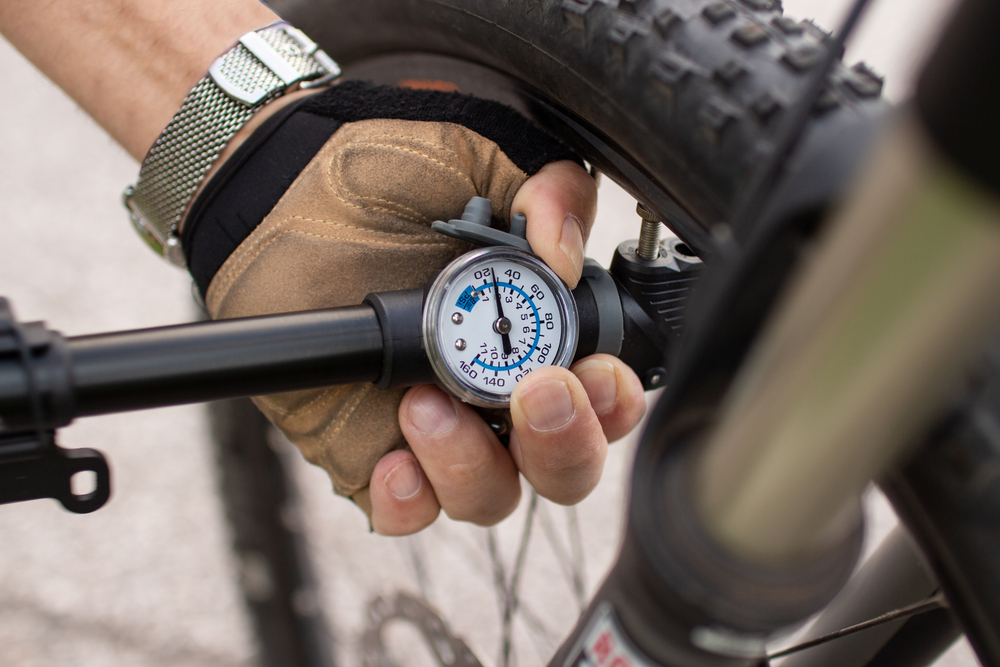
To get the most out of your mountain bike tires, it is essential to maintain the correct tire pressure. Here is how to measure and adjust tire pressure:
- Determine the recommended pressure range – Check the sidewall of your tires for the recommended pressure range. Most mountain bike tires recommend a range of 22-35 PSI, but it’s always best to check the manufacturer’s specifications to know how much air to put in your tires.
- Choose the optimal tire pressure gauge – There are different types of pressure gauges available, including digital pressure gauges, bike tire pressure gauges, and bike pumps. Choose the one that suits your needs.
- Check the valve type – There are two types of valves, Schrader and Presta. Make sure you have the right pump head for your valve type.
- Remove the valve cap – Remove the valve cap and press the pump head onto the valve stem.
- Check the current pressure – Use the pressure gauge to check the current pressure in the tire. If the pressure is too low, add air using the pump. If it’s too high, release air by pressing the small pin in the center of the valve stem.
- Adjust the pressure – Use the pump to add or release air until the pressure is within the recommended range.
- Check the pressure again – After adjusting the pressure, recheck it to make sure it’s within the recommended range.
- Replace the valve cap – Once you’re done, replace the valve cap to protect the valve from dirt and debris.
Tire Pressure for Different Riding Styles
Regarding mountain bike tyre pressure, your preferred riding style requires a different specific pressure level. Here are some guidelines to follow for various riding styles:
Cross-Country (XC) Riding
You want higher tire pressure within the 30-50 PSI range to reduce rolling resistance and increase speed.
Enduro Riding
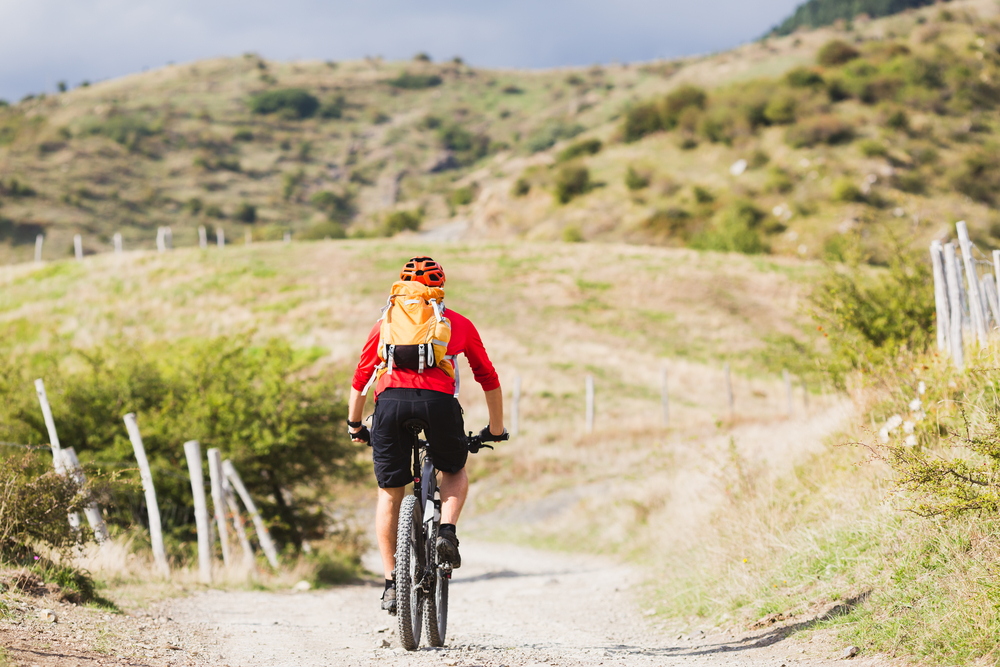
Enduro riding requires a balance between speed and control. So, you want a tire pressure range of 25-35 PSI to maintain speed while maintaining good traction and control on technical terrain.
Downhill Riding
Downhill riding demands the most traction and control, so you want to run lower tire pressures to maximize grip. A good range is between 20-30 psi, depending on your weight and tire size. Lower pressures will also help absorb impacts and provide a smoother ride.
Trail Riding
A good range to aim for is 25-35 PSI. This will give you a good balance of speed and control on various terrain.
Understanding and Preventing Flats
One of the most common issues mountain bikers face is flat tires, which can quickly ruin your ride and leave you stranded on the trail.
One type of flat particularly common among mountain bikers is the pinch flat, which happens when the tire pressure is too low. This occurs when the tire is compressed between the rim and an obstacle, such as a rock or root. The resulting pinch can cause two small holes in the tube, which resemble a snake bite.
To prevent flats, you should consider investing in tires with puncture protection. These tires are designed with extra layers of material to help prevent punctures from sharp objects on the trail. Additionally, you can use tire sealant to help seal small punctures as they occur, reducing the risk of a flat.
Experimenting with Tire Pressure
Factors like rider weight, terrain, and tire width all play a role in determining the optimal PSI for your tires. The good news is that with some experimentation, you can find the perfect pressure for your individual needs.
Start by using a tire pressure chart as a reference point. This will give you a general idea of where to start based on weight and tire width. From there, you can adjust the pressure up or down by a few PSI and see how it affects your ride.
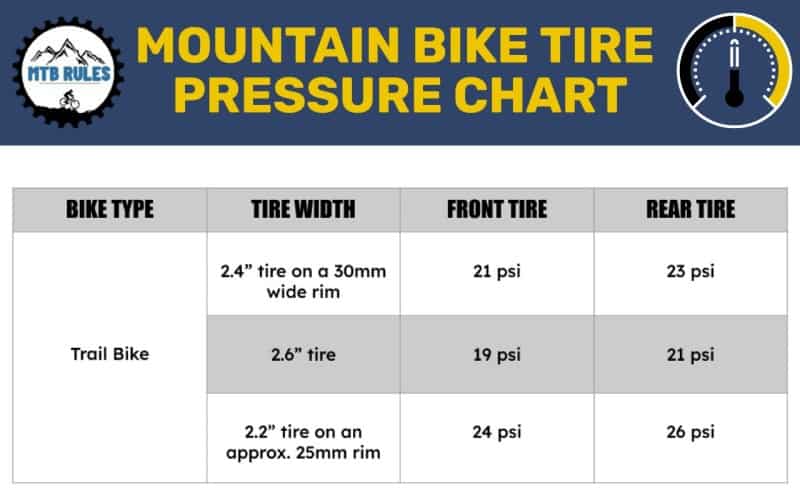
Pay attention to how your bike handles different types of terrain. If you notice that you’re losing traction on loose or slippery surfaces, try lowering the pressure a bit. On the other hand, if you’re experiencing a lot of bounce or feeling unstable on rough terrain, try increasing the pressure.
It’s important to note that tire pressure isn’t the only factor that affects your ride. Your ability and experience level also affect how your bike handles on the trail. So, don’t be afraid to experiment and find what works best for you.
Frequently Asked Questions

What is the recommended tire pressure for a mountain bike?
Mountain bike tires have a recommended pressure range of 22-35 PSI. However, it is always best to check the manufacturer’s recommendations for your specific tires.
How do I know if my mountain bike tires are overinflated or underinflated?
Overinflated tires will feel stiff and bouncy, and may cause a harsh ride. Underinflated tires will handle soft and squishy, and may cause difficulty in handling and control.
Is it better to have higher or lower tire pressure for mountain biking?
Lower tire pressure provides better grip and control on rough terrain, while higher pressures provide better speed and efficiency on smoother terrain.
What are some common mistakes people make when inflating their mountain bike tires?
These include overinflating or underinflating, not checking the manufacturer’s recommendations for their specific tires, and not checking tyre pressures regularly.
